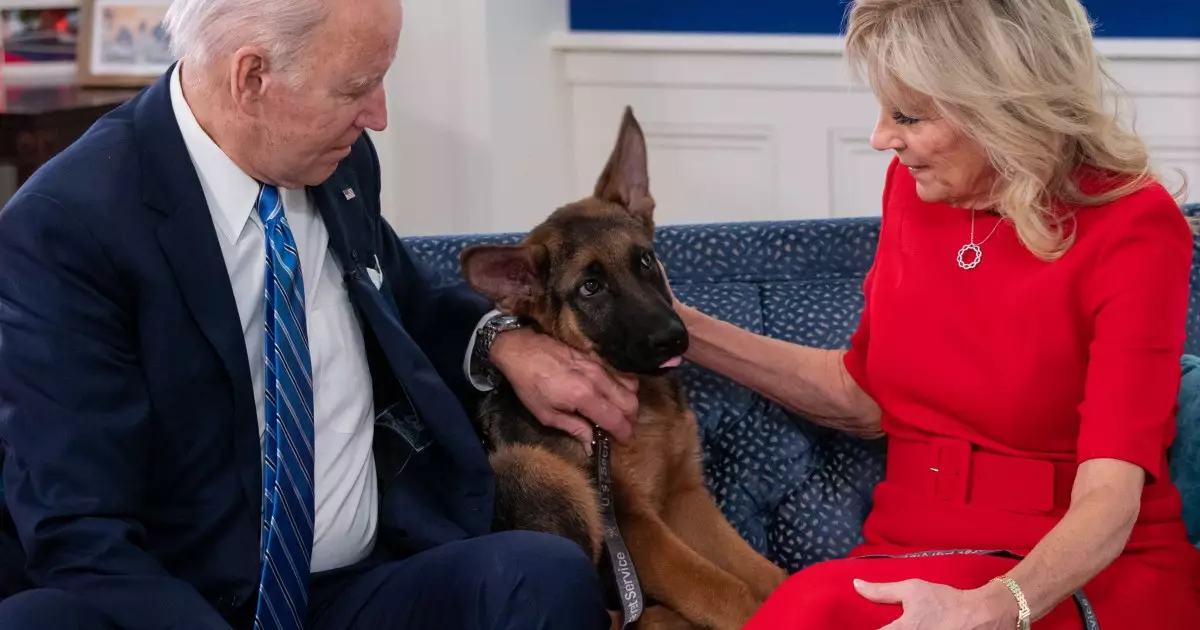For any dog owner, navigating behavior issues can be a daunting experience, and when those challenges arise in a high-profile environment such as the White House, they become public concerns. Recently, President Joe Biden’s younger German Shepherd, Commander, has been linked to several biting incidents that have raised alarm among Secret Service personnel and the public. This situation, while unique due to its context, brings to light critical considerations regarding dog training, behavior management, and the responsibilities of pet ownership.
The White House is not just a residence; it’s a complex space filled with the hustle and bustle of daily political activities, security protocols, and personnel who require assured safety. According to reports from CNN, Commander has been involved in at least ten biting incidents, leading to heightened concern from U.S. Secret Service personnel. These incidents include alarming situations where the dog allegedly attacked agents, leading to one requiring medical treatment. Such occurrences prompt an examination of the challenges faced by pets living within a high-stress, highly regulated environment.
It’s evident that dogs, like humans, can be influenced by their surroundings. The interactions, noises, and numerous strangers in the White House could evoke stress or anxiety in any dog, particularly a young one. This raises important questions about how to best train and acclimate such pets in a way that minimizes risks for both the animals and the individuals around them.
The Biden administration has admitted to the biting incidents and is reportedly working on a comprehensive training plan for Commander. Training a dog, especially one that exhibits aggressive behaviors, necessitates a multifaceted approach. It’s not merely about rectifying behavior, but understanding it as well. For example, why is Commander displaying aggression? Is it anxiety, fear, overexcitement, or an innate misunderstanding of social boundaries?
When addressing such issues, it’s critical to employ humane and effective training methodologies. Punitive measures are counterproductive; they can deepen underlying issues and damage the trust between a dog and their owner. Instead, focusing on positive reinforcement and working with a professional trainer or behaviorist manifests a more promising outcome. Understanding canine body language and contextual behavior are vital for revealing the nuances of a dog’s psyche, providing insight into not just why they bite, but how to help them adapt.
Professional dog trainers and animal behaviorists can provide invaluable support not only in training the dog but also in educating the pet owners about appropriate responses when behavioral issues arise. Particularly in a setting like the White House, structured training protocols are likely essential. Integrating designated areas for exercise and social interaction can significantly benefit any dog, allowing them to engage in activities that reduce pent-up energy and stress.
Moreover, adopting methods such as clicker training can be especially effective. This technique reinforces positive behavior with rewards — instilling good habits over time while curtailing undesirable actions. Given that Commander is still a puppy, with proper socialization and exposure to varied scenarios, his behaviors may evolve positively.
Creating a supportive environment is crucial for both pets and their owners. Regular exercise, social skills development through interaction with other dogs, and cognitive challenges can cultivate a sense of well-being and security. Establishing application protocols that ensure the dog has adequate outlets for energy while minimizing risks to security personnel is an essential strategy on the part of the Biden administration.
Involving the Secret Service, as reported, in the training efforts illustrates a proactive approach towards ensuring the safety of all involved. Furthermore, it sends a message that responsible pet ownership extends beyond just appearance; it encompasses safety, well-being, and education.
Addressing biting incidents, especially in a high-pressure environment, demands a nuanced understanding of canine behavior and a commitment to ensuring the safety of everyone involved. With President Biden’s acknowledgment of the issue and ongoing efforts toward training Commander, there exists an opportunity to not only rectify adverse behaviors but also to foster a more enriching and understanding relationship between dogs and their human counterparts. Ultimately, as any dog owner will attest, patience, empathy, and consistent, positive reinforcement can lead to harmonious coexistence, whether in the White House or in the comfort of one’s own home.

